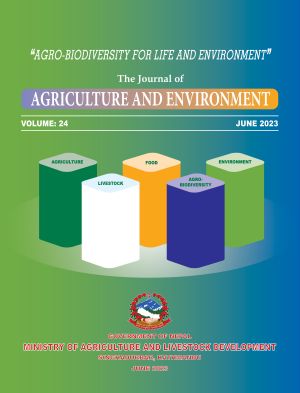Efficacy of Chemicals and Hot Water Treatments on Quality and Shelf Life of Amrapali Variety of Mango
DOI:
https://doi.org/10.3126/aej.v24i01.58163Keywords:
Hot water treatment, physiological loss in weight, post-harvest, fruit quality, shelf lifeAbstract
An experiment was conducted to evaluate the effect of hot water and chemicals on the quality and shelf life of Amrapali variety of mango at Agriculture and Forestry University, Rampur, Chitwan, Nepal. The experiment was laid out in completely randomized design with 6 treatments and 4 replications. Physiologically matured mango fruits (200±20 g) were treated with distilled water for 10 minutes, hot water @ 50°C for 10 minutes, hot water @ 55°C for 10 minutes, carbendazim solution @ 0.1% for 10 minutes and Sodium hypochlorite solution @ 100 ppm for 2 minutes. The untreated fruits were considered as control treatment. The highest total soluble solid (18.15°Brix), the lowest physiological loss in weight (24.20%) and the lowest spoilage loss (42.05%) were observed in fruits treated with hot water at 55°C. Therefore, the post-harvest treatment of mango fruits with hot water at 55°C for 10 minutes was found to be effective for maintaining the quality and shelf life of mango.




